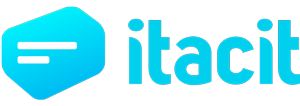Professionals, both staff and executives alike, have had change management on their radars recently.
Change fatigue has been a rising issue for years, with Gartner respondents ranking it at the top of the “Most Pressing Challenges for Communicators in 2019”.
That’s all well and good, but what does it actually mean for you?
First, as not exactly a new problem, you or someone you know has likely heard of this concept by now.
Maybe an old coworker would groan audibly whenever a new update or suite was introduced to the employee ecosystem. Perhaps you bear some ill will towards the coordinator who constantly shoves an overwhelming amount of ‘this is the new thing‘ products at you all.
Here’s what you need to know about how change management can save your fatigued workforce.
Feeling disengaged? Change management can solve that.
Here are some common characteristics of change fatigue (borrowed from this article by CMC Canada):
- Stressed out, tired workers who just aren’t committing as much as they always have.
- Disengaged staff or members who push back against change management.
- Decreasing productivity and interest in everyday work or new initiatives.
- Overall resignation in the workplace instead of questions and ideas when shown a new project/task.
If you find yourself thinking that maybe you do see these signs in your workplace, you’re right to then wonder where or when did they begin?

Changes add up
Change can be like a snowball. Beginning with the smallest tweaks at the lowest level, eventually things will move to the top and then trickle down, affecting everyone in some way.
Initially it could be just one messaging app. Months down the line, subscriptions have piled up, adding to the noise for communicators and causing clutter for employees. Someone may say something akin to ‘why do we need so many messaging channels? One worked just fine for me!’
Shifting communicators to a position that allows them to better understand what makes their coworkers happy while reining in competing messages is one of the best business practices around.
“Strong leadership with different personalities and approaches can lead to disjointed communication styles… many organizations believe a failure to thrive is simply a case of not ‘telling our story,’ or that just saying things in the right way, without considering the audience and their needs, will change the result.”
– Heather, Communications Manager
Gatehouse’s State of the Sector 2019 report focuses on internal communications (IC) and employee engagement. Some relevant pieces of info from it are:
- Over 90% of participants said that their everyday tasks throughout 2018 regularly involved “supporting change through communication”.
- However, every topic that the survey touched on was answered with respondents estimating that half of their workforce would NOT understand the subject area.
Unreceptive audience?
That’s a glaring issue for anyone involved in the employee experience field. If your coworkers can’t even fully process what you’re pushing out to them, what’s the point? This is where change management steps in.
Internal communications workers will face these obstacles and more if change fatigue truly sets in: their audience is less receptive, with efforts simply not resonating, and turnover rates may even go up.
This all ties into change fatigue. Years ago, when the majority of documents and notices were dispersed either in-person or physically, there was less of a disconnect. Now, there is just too much. Too much of everything for some organizations.

It may be time to bundle everything into one branded app, proactively shifting to a flexible platform. Adapting to this continuous change, instead of simply rattling off new directions and routines, will prevent everyone feeling left behind and overwhelmed.
So, it’s up to those responsible to keep everyone engaged and on board, spread enthusiasm about future developments and efficiently manage internal communications.











